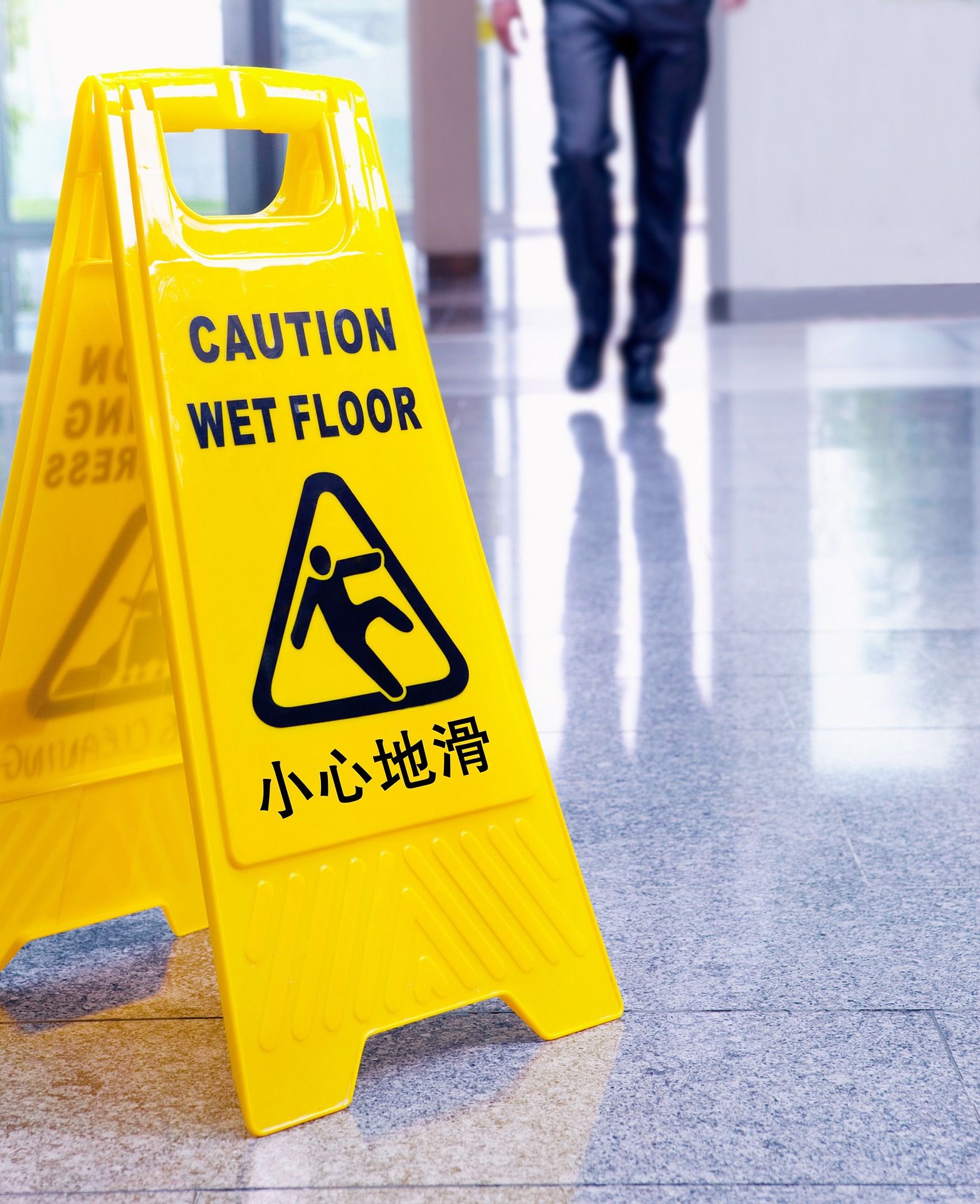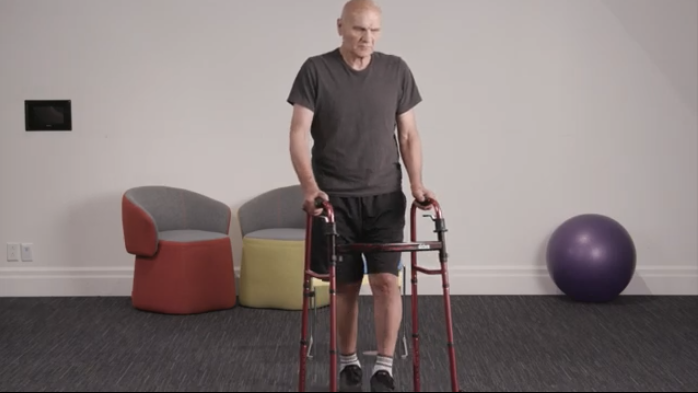When using a walker after surgery it’s important to be as safe as possible to avoid falling. However, it is important to realize falls can happen and it is crucial to know what to do if you fall. In this blog I will discuss learning how to fall, how to get up safely and tips to avoid falling in the future.
Learning how to fall safely
You are using your walker and you start to lose your balance . When this happens the first thing you need to try and do is avoid a fall . If there is a stable surface beside you such as a banister or stable counter or large piece of furniture that you can reach, move your hands off your walker and support yourself using this surface. If you reach for a chair or a small piece of furniture this may not support you and can result in further injury when you do fall. If this is not possible try and step toward the direction you are falling to try and move your body or your center of mass back in the middle of your stance. This is why it is important to prepare your home before your surgery. For more information about how to prevent falls after a knee replacement, hip replacement and ACL surgery check out this blog here.
If you can’t catch yourself and continue to lose your balance it’s important to realize you are going to fall. This is okay. Falls happen however, let’s make sure you know how to fall safely.
- The most important step is to take your hands off of your walker. If you continue to hold onto your walker it will not stop the fall and you are putting yourself at a higher risk of injury from contact with the walker and the ground. [1]
- Try and relax your body. Stiffening up only makes you more likely to cause injury.[1]
- Avoid the reflex of falling forward on your hands. Try and roll or twist to the side to land on more heavily padded areas of your body.[1]
- While falling try and crunch yourself down and keep your elbows and knee bent. The reason is to control the force of the fall and distribute forces with your core.[1]
- Avoid hitting your face. Try and tuck your chin down into your neck and move your head to the side away from the fall.[1]

Image by Pexels via Pixabay
How to get up safely
You have fallen. The most important thing to remember after a fall is that when you get back up you have to be careful to ensure you don’t fall again.
- Take a breath and stay calm. Assess how you are feeling and if you are seriously injured. If you are seriously injured and can’t get up, call for help or call 911. You should never try and get up if you feel like you will hurt yourself more by doing so.[2]
- If you are comfortable and ready to get back up, roll onto your side. Once on your side bring your legs to the middle of your body and use your arms to prop yourself up into a side sitting position.[2]
- Identify any furniture or stable objects that you could use to help get yourself up. Once identified, move to step four.[2]
- Use your arms and swing your legs into a 4 point hands and knees crawling position. Crawl to the stable object.[2]
- Place your arms on the stable object. Move your stronger leg and place your foot flat on the floor. This is almost in a lunge position.[2]
- Use your arms and strong leg to push yourself upwards into standing. Immediately turn and sit in the chair or on the object. Take a moment to take a breath and call whoever you feel is appropriate to let them know about the fall. If you are hurt it’s always important to tell your primary care doctor and make sure everything is okay. If you are severely hurt, call 911 or other local emergency health response service.[2]

Image by user1629 via Pixabay
Tips to avoid falling in the future with your walker
- Whenever you are using your walker wear shoes with good support and grip. Slippers or sandals are not a safe option as they may cause you to trip and fall![3]
- When walking always look forward, avoid staring at your feet.[3]
- While walking to avoid losing balance do not roll your walker too far ahead of you, try to move it a maximum 1 step ahead of you.[3]
- Step first with your injured or surgical leg so you can use your strong leg for support and to propel you forward. Do not step all the way forward, step to the middle of your walker.[3]
- Whenever you are stopped make sure you have the breaks on when possible and avoid leaning heavily on your walker.[3]
- Consistently check the rubber tips on the bottom of your two-wheeled walker to make sure they aren’t worn out.[3]
- On water, ice or other slippery conditions try and take small steps if you are unable to maneuver around them with your walker.[3]
- How To Use Your Walker Safely After Knee Replacement or Hip Replacement Surgery
- How to use a walker and safety tips part 1: Learning the basics
- How to use a walker and safety tips part 2: Sitting, standing and getting in and out of bed
Conclusion
It’s important to be as safe as possible when using a walker after surgery to avoid falling. However, falls do happen, so realizing when you are going to fall, falling safely and knowing what to do if you fall is extremely important. We've also written a great blog about how to shower and go to the washroom when using a walker after a knee replacement.
For more informatin about knee replacements, hip replacements and ACL surgery, check out Curovate. Curovate is an evidence-based app that will provide you with a physical therapy plan, guided video exercises and ways to measure and monitor your rehabilitation progress! Download Curovate today by clicking the links below.
If you need further customized assistance during your surgery or injury recovery check out our Virtual Physical Therapy page to book your 1-on-1 video session with a physical therapist.
Other recommended blogs
References
3 HealthLinkBC. Using a walker. Health Link BC Web site. Updated 2019. Accessed 03/12/, 2021.
 |
 |
|---|







